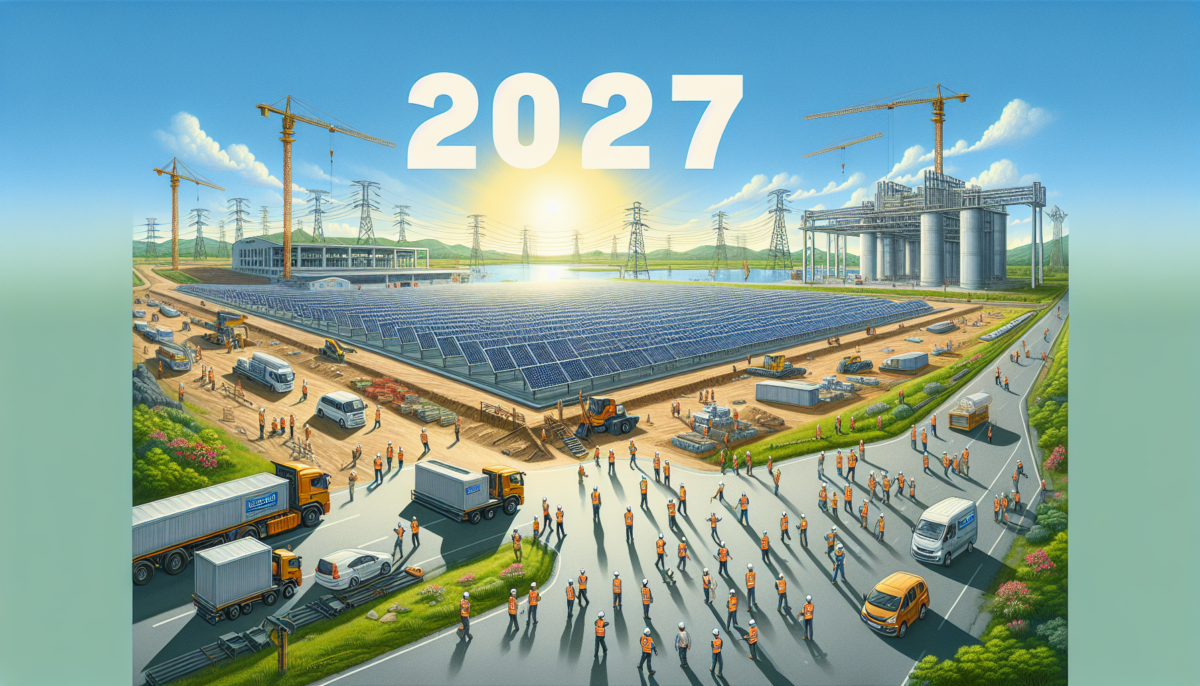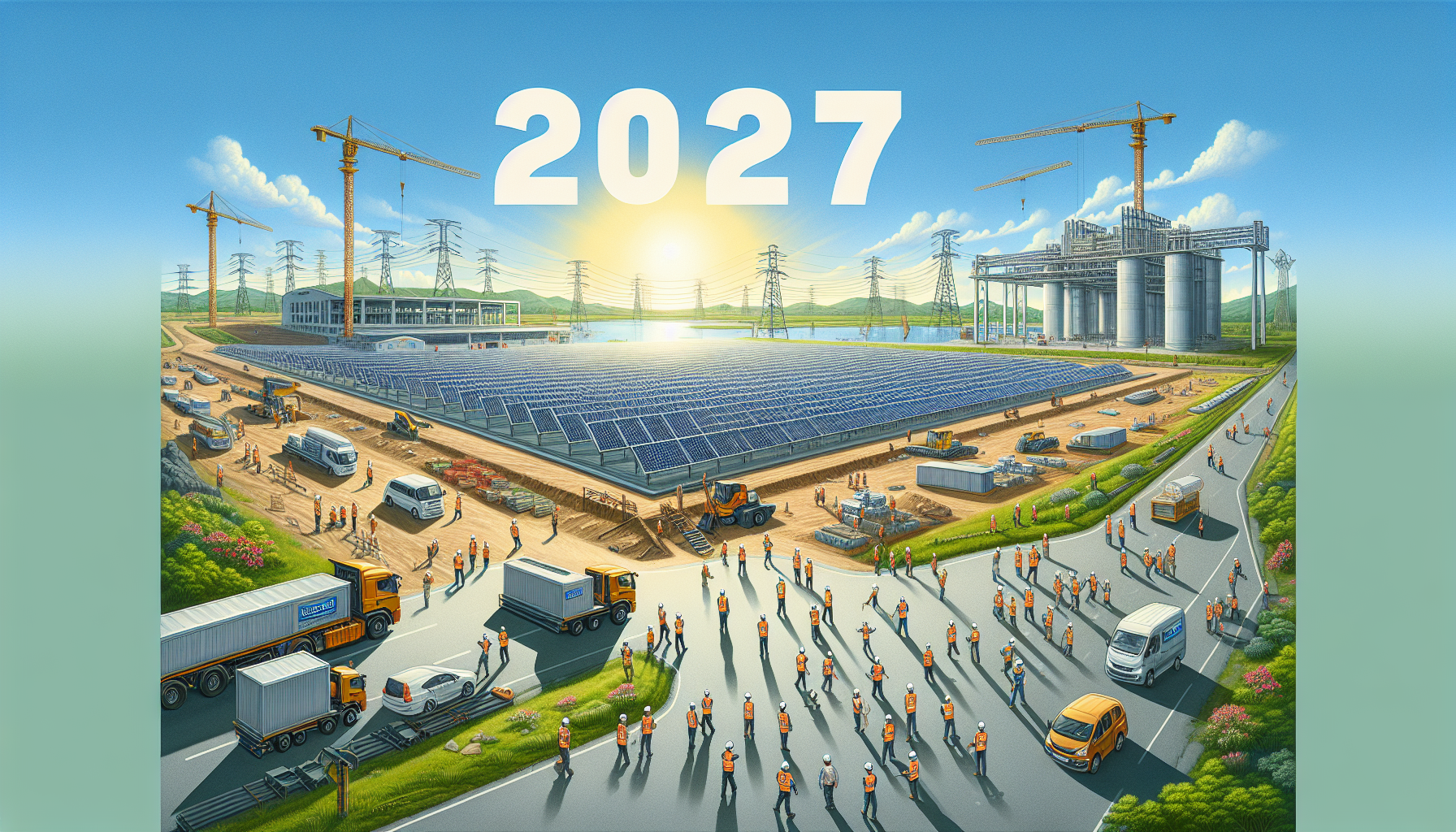Victoria to Build State-Owned 119MW Solar Power Plant and 100MW Battery, Aiming for 2027 Opening
We independently review everything we recommend. When you buy through our links, we may earn a commission which is paid directly to our Australia-based writers, editors, and support staff. Thank you for your support!

Victoria’s Bold Venture into Renewable Energy: 119MW Solar Farm and 100MW Battery by 2027
The Victorian Government is embarking on a significant journey in the realm of renewable energy, with ambitions to construct a large 119MW solar farm alongside a 100MW battery. Scheduled for completion by 2027, this initiative, led by the reinstated State Electricity Commission (SEC), is aimed at lowering energy expenses and facilitating a shift from fossil fuel dependency to renewable energy options.

Quick Summary: Important Highlights
- The government of Victoria will develop a 119MW solar farm and a 100MW battery by the year 2027.
- This initiative is driven by the re-established State Electricity Commission (SEC) as a segment of a more extensive renewable energy framework.
- The $370 million investment is projected to provide renewable energy to around 51,000 homes.
- This project aims to lower electricity costs and lessen reliance on coal and gas energy sources.
- Horsham has been confirmed as the site, though contractors and manufacturers await announcement.
- Revenues generated from this project will be funneled back into additional renewable energy ventures within Victoria.
- Tesla’s Megapack and Autobidder software may be considered for battery storage technologies.
Victoria’s Renewable Energy Initiative
In a pivotal advance towards sustainable energy, Victoria plans to develop a state-owned solar farm and battery storage system by 2027. This effort is led by the State Electricity Commission (SEC), a government entity re-established to vie against private energy companies and curb escalating energy costs. Following the privatization of the energy sector in the 1990s, residents have faced ongoing price escalations, with the government having minimal influence over these surges.
The SEC initiative signifies a $370 million commitment to renewable energy infrastructure, serving as an essential element of Victoria’s strategy to transition away from coal and gas energy production. This renewable energy site in Horsham will generate sufficient power for approximately 51,000 homes and assist in stabilizing electricity costs for consumers statewide.
Specifications of the Solar Farm and Battery
The undertaking will comprise a 119MW solar farm and a 100MW battery system, both engineered to deliver clean, sustainable energy to homes in Victoria. The solar farm will transform sunlight into electricity, while the battery system will store surplus energy, ensuring availability during high demand periods or times when solar output is diminished, such as at night or on overcast days.
Solar and battery systems of such dimensions are part of an evolving trend in Australia, where both governmental bodies and private enterprises are increasingly channeling investments into renewable energy to achieve climate objectives and minimize carbon emissions. This initiative is poised to be a cornerstone in Victoria’s movement toward a more sustainable energy future.
Why Does This Matter?
This initiative transcends a typical energy project—it signifies a fundamental transformation in Victoria’s energy production strategy. By re-entering the energy marketplace through the SEC, the Victorian Government intends to render energy more affordable and sustainable for its populace. Furthermore, this project aligns with both state and national aspirations to curtail greenhouse gas emissions and confront climate change.
Potential Partners and Technology
While the project’s site is secured in Horsham, specifics regarding contractors and technology providers remain uncertain. Nevertheless, there is speculation that Tesla might play a crucial role in supplying the batteries for this endeavor, considering their involvement in other large-scale battery projects across Australia. Tesla’s Megapack and Autobidder software are already active in several other renewable initiatives, and their participation could offer a dependable and scalable energy storage solution.
No matter which parties ultimately secure the contract, the emphasis will be on employing state-of-the-art technology to ensure the project’s success and enduring viability. The Victorian Government has pledged to reinvest profits from this venture into further renewable energy initiatives, assuring that the advantages of this investment continue to expand over time.
Reducing Electricity Expenses
A principal objective behind this initiative is to lower electricity costs for Victorians. With energy prices soaring since the sector’s privatization, numerous households have found it challenging to keep pace with electricity bills. The establishment of a government-owned energy provider is anticipated to foster essential competition in the market, thus lowering prices and easing the financial strain on consumers.
The SEC’s commitment to renewable energy is integral to this strategy. Once established, renewable energy sources tend to be less expensive to maintain than traditional coal and gas power facilities, meaning consumers can anticipate lower energy costs in the long run.
Confronting Climate Change
The 119MW solar farm and 100MW battery initiative is also vital to Victoria’s strategy in addressing climate change. By substituting fossil fuel-based energy with renewable options, the state strives toward its aim of achieving net-zero emissions by 2050. This project is expected to significantly lessen the state’s carbon footprint, enhancing efforts both nationally and internationally to mitigate climate change effects.
Conclusion
The re-established State Electricity Commission (SEC) of Victoria is channeling $370 million into a substantial renewable energy project, comprising a 119MW solar farm and a 100MW battery storage system. Expected to begin operations by 2027, this initiative will generate sufficient energy to power 51,000 homes and is likely to lead to lower electricity prices for Victorian residents. This project is a vital part of the state’s overarching plan to eliminate fossil fuels and transition to renewable energy sources, while simultaneously contributing to the battle against climate change.
